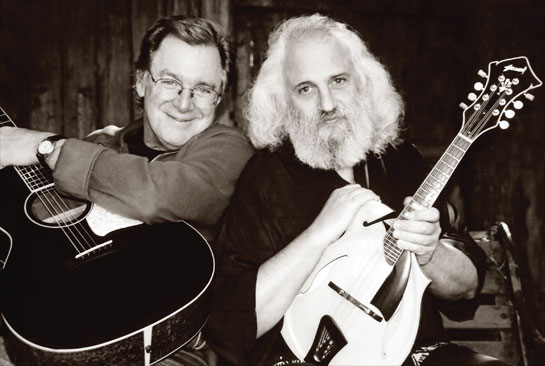
JOHN SEBASTIAN
John Sebastian was born in New York on March 17, 1944. His father was a noted classical harmonica player, and his mother, a radio programs writer. Growing up in Greenwich Village, the epicenter of the up-and-coming folk revival, by 16 Sebastian was playing local clubs. As a member of the Even Dozen Jug Band (with David Grisman, Maria Muldaur, Stefan Grossman and others), his guitar, harmonica and autoharp skills soon brought him work with many artists, including Tim Hardin, Mississippi John Hurt, Judy Collins, Bob Dylan, Crosby, Stills & Nash, the Doors, the Everly Brothers, Graham Parker, Dolly Parton, Peter, Paul & Mary, John Prine and Bonnie Raitt.
After the Even Dozen Jug Band split, Sebastian briefly joined the Mugwumps, with Zal Yanovsky, Cass Elliot and Denny Doherty. Sebastian and Yanovsky began assembling the folk-rock band, the Lovin’ Spoonful (with bass player Steve Boone and drummer Joe Butler), while Elliot and Doherty became half of the Mamas and the Papas.
As a singer, songwriter and musician, Sebastian brought the Lovin’ Spoonful a string of Top Ten hits in 1965-1967—their first seven singles topped the charts—an unimaginable feat at the height of Beatlemania. Using roots music as their inspiration, John composed and sang a series of original songs that were completely modern and yet still contained the essence of America’s musical history.
After leaving the Spoonful, John performed at festivals like Woodstock and the Isle of Wight, composed music for TV and films such as Francis Ford Coppola’s You’re A Big Boy Now and Woody Allen’s What’s Up Tiger Lily, and in 1976 topped the charts with Welcome Back, the title track commissioned for the hit TV show Welcome Back Kotter. Sebastian also toured and recorded during the ’70s and ’80s, and inspired countless aspiring artists with his music and instructional books on guitar and harmonica, and wrote a children’s book in 1993, JB’s Harmonica.
In the ’90s, John created the J-Band with Jimmy Vivino and James Wormworth, who recruited jug virtuoso Fritz Richmond. Paul Rishell and Annie Raines came in after the J-Band obtained a mysterious tape of them, then legendary Yank Rachell joined. The group receives critical acclaim for their contemporary jug band style. (Their albums are some of the last recorded performances by Rachell and Richmond, who died in 1997 and 2005, respectively.)
Inducted into the Rock and Roll Hall of Fame in 2000, John still tours, keeping the tradition of American roots music alive. He has supported environmental and animal rights causes, and campaigned on behalf of the National Music Publisher’s Association. His remarkable music biography is now the subject of the PBS documentary Do You Believe In Magic: The Music of John Sebastian.
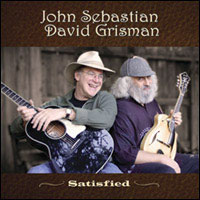 After 40 years of separate roads, John and fellow Even Dozen Jug Band member David Grisman reunited at a benefit concert in California, and devised their most recent project, Satisfied, an album of acoustic duets. (See review in On the Record.) Sebastian’s four decades (and counting) in music will remain a part of our cultural heritage. He continues to preserve our rich and unique musical legacy, able to renew the old through his original, modern compositions.
After 40 years of separate roads, John and fellow Even Dozen Jug Band member David Grisman reunited at a benefit concert in California, and devised their most recent project, Satisfied, an album of acoustic duets. (See review in On the Record.) Sebastian’s four decades (and counting) in music will remain a part of our cultural heritage. He continues to preserve our rich and unique musical legacy, able to renew the old through his original, modern compositions.
DAVID GRISMAN
David Grisman was born in l945 in Hackensack, NJ. His father was a trombonist who encouraged him to begin piano lessons at seven, but after his father’s death, David explored the saxophone and mandolin and concentrated on rock ‘n’ roll and folk music. Local mandolinist Ralph Rinzler communicated his appreciation of traditional music, including bluegrass, to the young Grisman. Later, while attending New York University in l963, he joined a Greenwich Village group, the Even Dozen Jug Band, with John Sebastian. Three years later, he joined Red Allan’s Kentuckians, which led to his joining forces with Peter Rowan in the genre-defying progressive group Earth Opera.
After two albums, Grisman relocated to San Francisco where he hooked up with Jerry Garcia, participated in the Grateful Dead’s classic American Beauty album, and formed the 1973 band Old & In The Way (where Garcia’s nickname for Grisman was “Dawg”). He also re-teamed with Peter Rowan in a group called Muleskinner and later founded the Great American String Band with fiddler Richard Green.
After Green’s departure, Grisman started the David Grisman Quintet, which included fiddler Darol Anger, guitarist Tony Rice, bassist Joe Carroll and mandolinist Todd Phillips. Following the success of their initial release, Grisman was signed to A&M records and released Hot Dawg (1979), which featured jazz violin legend and former Django Reinhardt collaborator Stephane Grappelli; that, in turn, led to the l981 Stephane Grappelli and David Grisman Live album that defined Grisman’s synthesizing bluegrass, jazz, folk and Gypsy music to form what is now known as “newgrass” or “Dawg” music. Grisman himself, however, says “Bluegrass means a certain thing to me, and most of what people call bluegrass now is hardly strictly bluegrass. Just call it music and enjoy it.”
He established his own label (Acoustic Disc) in l990, and continues to produce unique offerings such as the Tone Poems albums with Tony Rice and Martin Taylor, and the 2006 New Shabbos Waltz. His collaborations include a long list of musicians such as Doc Watson, Mark O’Connor, Béla Fleck, Bob Brozman, Mike Auldridge, Bonnie Raitt, Mike Seeger, David Bromberg, Del McCoury, Ralph Stanley, Earl Scruggs, John Hartford, Vassar Clements and the Kronos Quartet to name a few, the latest of which is Satisfied, with John Sebastian.
![]()
Elmore: What are you listening to right now?
John Sebastian: I just took off Béla Fleck and Keith Jarett and put on the Mills Brothers. Of course I’ve always got a John Hurt CD underneath the player.
David Grisman: I’ve got about 14,000 songs on my iPod. I can press shuffle and see what comes up. I listen to everything from Thelonius Monk to the Stanley Brothers. I’m mostly interested in older stuff because I’m a history buff: the original bluegrass bands which Ralph and Stanley copied. Miles and Coltrane, J. S. Bach, Richard Rodgers.
I don’t relate to most music nowadays that’s created just to be sold. I think the main thing that’s missing in music is any purpose. What is the reason for this? Because music did have a reason. It was for dancing or it made you feel happy, it put you in a mood. Now it’s like “Are we going to sell a lot of records?”
|
John Sebastian on recording Satisfied: David records on big fat analog 2-track. There’s a digital backup but no overdubs. When I asked him why, he said “Hey, I got stockholders to answer to!” I’ve never recorded that way. It was absolutely like trying to pry a cat out of a box. Day after day I’d say “David, just let me go back and do that vocal again.” He’d say, “Let’s just do it all again.” I couldn’t make the adjustment. It was maybe the third or fourth day that I started to realize that there really was something there that wasn’t on all these records where I had 24 takes of everything. I’ve had the rare privilege of being able to be both the guy up front and the guy in the back, and I enjoyed both roles tremendously. Because I had been a sideman, when I would get into the record-making process and a second or third instrument was needed, they knew that I probably played it, and I would end up overdubbing different instruments. You can’t play a harmonica while you’re singing—that kind of thing. Whereas David would go, “Okay, well just play the harmonica in between.” I’d go, “But David, that means I have to play it on a rack.” He’d say, “Yes, I love the way it sounds on a rack.” “But David, I don’t have any control with my hands. I can’t do half the things harmonicas do.” He goes, “Yes, but isn’t it cool?” I had already been moved out of several categories and now here he was taking away what little I had left. Satisfied has a live feel to it. It was a process of dropping preconceptions and old habits, and I really did resist for a week or two before I began to realize that we were capturing something that we had not been able to before. I would record that way again in a minute. I get work as a session player, and I was a big pain in the butt to a guy the other day because I listened to the track and I played along with it and then I listened to it and he said, “Gee, that sounds really good.” I said, “Yes, but none of the people in that room can tell I’m playing.” And he kind of looked at me for a very long minute before he got what I was saying. There’s no interaction when you overdub. Being able to react and have another musician reacting to you is like the effect of an audience. You gain something just by having that magical third party. There’s an immediacy to it that just doesn’t compare with what I’m now calling “cumulative recording” where you build. I made that up just right now. |
EM: What was the first record you ever bought?
JS: “Folsom Prison Blues” and, in fact, it wasn’t the Johnny Cash version. I realized after coming out of the store that there are other versions than the one you heard on the radio. How wrong is that? It was like the Trashmen, or the guys who did Surfin’ Bird.
DG: It might have been “Don’t Be Cruel” by Elvis Presley. It was some early rock and roll 78. The first jazz record I bought was a very unusual record by Francois Rabbath, who made a record called “Baseball” which was bass and drums.
EM: Where do you buy your music?
JS: I try to buy my music at local small record stores and to avoid the great big huge places.
DG: Amazon.com sometimes. I never do iTunes because they’re MP3s. Sometimes eBay. It’s usually online just because you can almost get anything. Koch distributes other labels so I bought about 20 box sets recently. Wherever I can get the best deal and the widest selection.
EM: What was the first instrument you played?
JS: The harmonica, at five, because my father would bring home Marine Bands from Trossingen, the original Hohner factory. He played a big chromatic instrument. Given these diatonics, he would either give them to me or to school children when he went to play at a school.
DG: I first played the piano at seven. My dad was a trombonist. I remember playing a simple arrangement of Hungarian Rhapsody at my first piano recital. I bailed on the piano. My dad died when I was ten and I lost interest in it. I probably had the wrong teacher and the wrong repertoire.
EM: What brought you to the instrument you now play?
JS: I have to say, hearing “Don’t Be Cruel” and “Heartbreak Hotel” while I was living in Rome brought me to the guitar. I was just fascinated by this sound I was hearing. I was 11 then, and by 12 I was borrowing a guitar. I was shown a chord or two and I thought I invented several more. Several years later I found out that these were common knowledge.
DG: Ralph Rinzler was an amazing mandolin player and folklorist and neighbor of mine in Passaic, New Jersey, who played with the Greenbrier Boys. I met him when I was two years old because my mother was his art teacher when he was 12. About 12 years after that he came into my junior high school English class where his cousin Elsie taught; several of us young misfits wanted to form a folk music club. I didn’t realize that Ralph, an old family friend, was a professional folk musician. He created the Folk Life Institute for the Smithsonian. He probably did more to preserve American folk culture in the 20th century than anyone else.
EM: Who would you like to write with that you haven’t?
JS: I rarely write with anybody else. I developed a bit of an antipathy for it when I realized that I had watered down a few songs for the sake of completion rather than just work at the pace that I’m used to, waiting for it to come. The only guy I have fun co-writing with is Al Anderson, because it’s a big mutual-admiration society.
DG: I don’t really need to collaborate with anybody.
EM: What musician influenced you most?
JS: You take in a lot over that much time. Really, Mississippi John Hurt…it’s hard to quantify how much he affected me. Learning how to thumb pick and all of that, but his persona, his beatific quality was like being an apprentice priest. Dad would certainly be on the list in terms of understanding the demands of playing well. I learned the discipline: I have to keep playing this passage until it sounds like I didn’t even think about it. Dad practiced six, sometimes eight hours a day, that’s what you do to maintain that skill level.
DG: Bill Monroe was a big influence for what he did with the mandolin. I’ve always been influenced by musicians with the sounds. Guys like Stephane Grappelli and Ben Webster were a big influence in that respect.
I’m influenced by Borat. I’m influenced by Ernie Kovack, by the Marx Brothers, by Stanley Kubrick, anybody who is great who has something to teach, are really creative and keep doing different things.
EM: What was the song or event that made you realize you wanted to be in music?
JS: I’m sixteen, going to school in New Jersey and finding that the only access to female company at a prep school is to join a band and go play the local dances. Then my father took me to a television show that he’s doing on a Sunday afternoon, which turns out to be very eclectic and includes himself, Joan Baez, an unknown folk singer of 17 or 18 or so, and Lightnin’ Hopkins. And I sat under the camera. Years later, my father said, “You know, son, I saw the day you left home. That day you were under the camera watching Lightnin’ Hopkins, I saw you leave home.”
DG: I guess hearing that bluegrass record was a moment. But there was another moment when I was about four, sitting on the floor of a beauty parlor where my mom was getting her hair done, and I heard “Put Another Nickel in the Nickelodeon. Music, music, music.” Somehow that attracted me.
EM: Who would you like in your rock and roll heaven band?
JS: I’ve done it. I had my favorite guys, the Spoonful, so to me what’s much more exciting is working a duet that sounds like four guys. I’m having fun playing with Grisman. David Grisman is my heaven band.
Rock and roll heaven band? I’ve had that, too, and that band is me and Jimmy Vivino, Michael Merritt, James Wormworth, and Johnny Johnson.
DG: I used to think in those terms, but lately I don’t because it’s also about who wants to play with me. I could say, yes, I’d love to have a band with Miles Davis or Django Reinhardt, but chances are they’d come in and it would be a drag. They’re on their trip.
I’ve played my music with some of the best musicians on the planet. Who gets Stephane Grappelli and Earl Scruggs and Tony Rice and Martin Taylor and Jay Brown? I’ve been really blessed. I enjoy playing with the guys I play with because they might not be the world’s greatest at something, but my dream band would have to stay together for 20 years. If my five favorite players all walked into a room, it would take a while to get it all sorted out. There is a comfort zone in playing together for years. The DGQ is in its 32nd year. It’s a pretty good band, and they know my tunes.
You might have your favorite Italian restaurant where you always get the world’s greatest spaghetti and meatballs, but you wouldn’t want to eat it morning, noon, and night, every day of the week. I like variety and contrast in music and in art. I haven’t found anybody who’s really perfect for every situation. If you become an expert on something, that generally narrows your field.
EM: What’s your desert island CD?
JS: Presenting the Ronettes. The Spoonful were crazy about Phil Spector, and we started to do shows with the Ronettes.
DG: My desert island iPod. I can carry around just about everything I have in my collection and put it on shuffle.


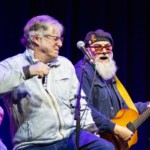
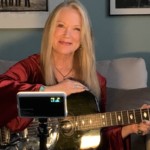

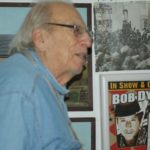

[…] John Sebastian & David Grisman: Less is More – The first jazz record I bought was a very unusual record by Francois Rabbath, who made a record called “Baseball” which was bass and drums. JS: I try to buy my music at local small record stores and to avoid the great big huge places. DG: Amazon. […]
[…] John Sebastian & David Grisman: Less is More – DG: Amazon.com sometimes … best deal and the widest selection. JS: The harmonica, at five, because my father would bring home Marine Bands from Trossingen, the original Hohner factory. He played a big chromatic instrument. Given these diatonics, he … […]